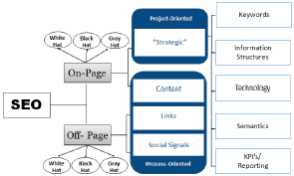
An Association Mobile Engagement Strategy Without an App: Attracting and Retaining All Generations - Generation Z to Boomers
Are you worried about attracting and retaining members of all age groups for your association?
Adopting a strategy that appeals to Millennials, Gen Z, Gen X, and Baby Boomers here is a solution. A mobile engagement strategy is the key to your association’s success.
A mobile engagement strategy is not just an app. An association can create an effective mobile engagement strategy without an app. With or without an app, it involves leveraging existing technologies, managing accessibility, and improving Search Engine Optimization (SEO). You don’t have to wait to implement this strategy; you can start immediately. Using three techniques, SEO, Mobile Responsive Design, and Digital Accessibility, associations can attract and retain members of all generations – from Generation Z to Baby Boomers.

Search Engine Optimization (SEO)
SEO is imperative for an association’s mobile engagement strategy. Gen Z and Millennials rely on digital and mobile access. When these generations search for content, they ask Google and Siri on their devices. If your association is not one of the first three results, then your members and potential members are going to the competition. The competition may be a competing association or a corporation. Regardless, another organization can monetize your members’ demand for your benefits, services, and non-dues offerings. Improving the organization’s SEO blocks competitors from your potential and existing members.
Sadly, search engine optimization, SEO, is an intimidating mystery for many associations. Is your organization practicing White, Black, or Gray HAT SEO? What’s your strategy, on-page or off-page? Aesthetic appearance, resolution, independent scalable, support CSS styling, and more can be overwhelming, especially when trying to interpret how to put it together. Then there’s content, link building, keyword, call to action, social media link, inorganic and organic search…oh my.

These terms and strategies are beneficial for those who have a thorough understanding. However, in most associations, each member of their staff wears five to eight hats and does not include any of them being White HAT, Black HAT, or Gray HAT.[1] Fortunately, if you can afford to invest in SEO, numerous consultants can help you in that regard.
But what if you don’t have staffing or budget? How can you improve your association’s website SEO? Incorporating a few basic techniques can significantly enhance an organization’s search engine ranking. Content, keywords, and inbound links (also known as backlinks) are three keys to improving SEO that are easily manageable by staff.

Content
Start with content! Associations are rich in content. Association content meets many of the quality factors that Google considers. Expertise, Experience, Authority, and Trustworthiness, also known as E-E-A-T, are essential in search guidelines. According to Drew Fortin (2023), “Google wants to know that you’re qualified to deliver information to searchers.” Is there more significant expertise, experience, authority, or trustworthiness than your association regarding your subject matter? I think not.
Ways to improve your authority with search engines include:
Include the association’s credentials across several sources on the web: LinkedIn, Facebook, etc.
Interview members, vendors, and other experts, including their insights in your webpage and log post Leverage their name, content, and insights on your website
Repurpose and publish your content to expand your digital footprint LinkedIn, Facebook, and other websites (Fortin, 2022).
Keywords or Topic Clusters
Keywords are phrases or words typed or dictated into the search engine. When your potential members say, “Hey Siri” or “Hey Google find me X,” the X is a keyword. To find relevant content, search engines query keywords. According to Feta Dennis (2022),
Because keywords come from search queries, incorporating these terms into your content strategy helps search engines rank your website pages and users find your content when looking for it.
Search engines highly rank relevance. However, focusing on keywords can be arduous, repetitive, and difficult to improve your rank.
Associations inherently lend themselves to topics. Topic clusters are a way of connecting various pieces of content with a topic. Creating “content based on specific keywords related to that topic that all link to each other, to create broader search engine authority (Barron, 2022).” Using a topic cluster approach allows an association to leverage large quantities of existing content. By linking them together, the content collectively creates a lift in your ranking higher authority.
Tip– Publish some of your content through your LinkedIn page. At the bottom of that post, add your organizational credentials and link to your topic on your webpage. Create a page of LinkedIn posts on your website, with each having the executive summary available on your webpage and a link to the entire post on LinkedIn.
Mobile Responsive Design Not Mobile Friendly
Associations wanting to be accessible via mobile devices require mobile responsive design, not mobile friendly. Mobile responsive design reformats items on the website page to reproduce a desktop experience. Items may be enlarged, resized, and reformatted for the best use of the mobile screen. This includes enhancing the experience, whether the device is in a vertical or horizontal view (Constant Contact, 2022).

Mobile friendly design resizes the entire page to fit the mobile screen. While this type of design allows for all the content to be seen, it is very difficult for it to be usable. Clickable items are difficult to touch. Written content may be difficult to read. Mobile friendly design has its use cases; however, one use case is to deter visitors from browsing on their mobile devices (Constant Contact, 2022).
If the association’s goal is to attract Gen Z and Millennials by asking Google, or Siri, who is the most relevant for their search, then mobile friendly design is detrimental to achieving its goal. Make sure your current website is mobile responsive, not mobile friendly.
Digital Accessibility
Baby boomers and Gen X are getting older. They are wealthy and tech-savvy. “According to AARP’s 2022 Tech Trends over 50 Report, over 75% of those over 50 use technology to stay connected (Gibson, 2022).” As these generations get older, the need for websites to be more accessible extends the lifetime value of a member. In other words, make it easy for a member to participate in your association, and they will pay dues for all the years they can participate.

Digital accessibility also gives associations access to a large pool that is typically ignored. According to David Gibson (2022),
People with disabilities are also a powerful consumer group. While not quite as large or wealthy as Boomers, the after-tax disposable income of the 61M people with disabilities is a whopping $490B.
In addition to allowing the association to serve more of the population, digital accessibility attracts and retains Gen Z and Millennials. These are socially conscious generations. According to Level Access (2022), “Consumers are increasingly loyal to brands that share their values of equity and inclusion.” It is not only the law; it also makes excellent business sense!
Digital accessibility also enhances a mobile engagement strategy. For a site to be digitally accessible, it uses several of the same basic principles used in search engine optimization. “How and what you write for assistive-technology users also improves how you rank with search engines, such as Google or Bing, which can drive more traffic to your website (Stanford et al., 2022). As a result, a digitally accessible website enhances search engine optimization. In other words, a digitally accessible site opens your organization to more members across all generations.
Next steps
For the next steps, start today with one of the ideas above. Pick the tip or technique that’s less taxing on your organization. For example, if you have much content, repurpose it. Organize it by topic. If your site is mobile ready, but not responsive, ask your webmaster and see what it would take to change that. Are you concerned with member access? Start with some fundamental accessibility changes. If you are unsure where to begin, contact a trusted advisor for some advice.
Not all associations are ready for a mobile app. However, to stay competitive, associations must have a mobile engagement strategy. An association can create an effective mobile engagement strategy by leveraging existing content and technology, using three techniques: SEO, Mobile Responsive Design, and Digital Accessibility. A mobile engagement strategy will attract and retain members, increasing dues and non-dues revenue from Generation Z to Baby Boomers.
J. Mark Wallach, MBA, is the CEO Emeritus of Engagement Mobile Strategies, a consulting agency committed to helping associations increase member engagement, retention, and non-dues revenue through mobile technology selection, strategy, and implementation.
For more information about member engagement and mobile technology visit www.engagementmobile.com or email curious@engagementmobile.com.
References
Sophia Bernazzani Barron. (2022). What Is a Pillar Page? (And Why It Matters For Your SEO Strategy). HubSpot. https://blog.hubspot.com/marketing/what-is-a-pillar-page
Constant Contact. (2022). Mobile-Friendly vs Mobile-Responsive. https://www.constantcontact.com/blog/website-mobile-friendly-vs-mobile-responsive/
Feta Dennis. (2022). What Are Keywords? (and Why You Need to Know How to Find Them). HubSpot. https://blog.hubspot.com/marketing/keywords#what-are-keywords
Drew Fortin. (2023). How to Create an SEO Strategy for 2023 [Template Included]. HubSpot. https://blog.hubspot.com/marketing/seo-strategy#content
David Gibson. (2022). Will Boomers Force Digital Accessibility Adoption? The Boomer Factor. Propeller Media Works.
Level access. (2022). Digital Accessibility Buyer’s Guide: A comprehensive how-to: Understanding digital accessibility and selecting the vendor that best meets your needs.
Muhammad Iqbal, Muhammad Noman Khalid, Dr Amir Manzoor, Malik Munib Abid, & Nazir Ahmed Shaikh. (2022). Search Engine Optimization (SEO): A Study of important key factors in achieving a better Search Engine Result Page (SERP) Position. Sukkur IBA Journal of Computing and Mathematical Sciences, 6(1). https://doi.org/10.30537/sjcms.v6i1.924
Stanford Medicine, Digital Services, Technology, and Digital Solutions. (2022). Search Engine Optimization (SEO) and Accessibility: A Quick Guide. David Gibson. (2022).https://med.stanford.edu/web/websites/seo—accessibility-quick-guide.html
Additional Photo Credits (In order of appearance)
Image by rawpixel.com on Freepik
Image by Journal of Computing and Mathematical Sciences, 6(1).
Image by creativeart on Freepik
Image by rawpixel.com on Freepik
Image by freepik
